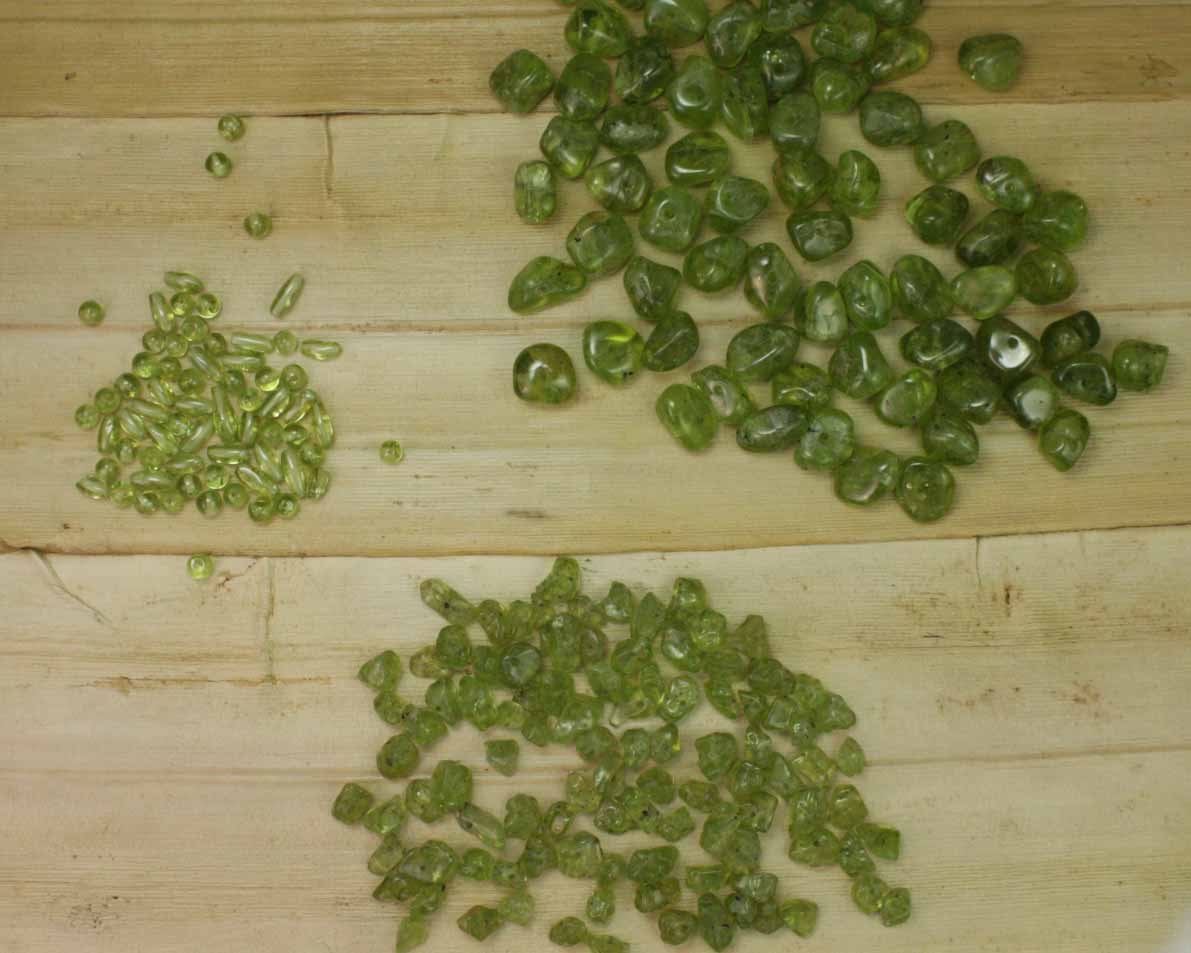Fun facts about Peridot, the August birthstone
Posted by Denise Hershey on Aug 2nd 2017
This month, I’m featuring Periodot, the gemstone for August birthdays. Other names for it include Evening Emerald, Chrysolite, and Olivine. Peridot is in the Olivine class, but not all Olivine is Peridot. Peridot is the gem quality Olivine. Peridot is generally not enhanced with dies or heat. The color is a light clear green through a darker olive green. The darker the color, the more popular the stone is. The agent that makes Peridot green is iron. The more iron, the more olive green the stone is.
The origin of the stone is Egyptian and was only mined in the Red Sea. That mine has long since played out. Its Peridot was milky and had inclusions. In recent years several even better quality mines have been discovered in countries such as Burma (Myanmar), China, Afghanistan, the US, and Pakistan where the quality is much cleaner than the Egyptian source.
These stones originate in the mantle and are brought to the surface via volcanism. Rarely they are found in meteorites, but are too tiny for gems. Peridot is often cut with facets like other gemstones. But, being the nature-girl I am, I prefer polished nuggets or beads.
Here’s a picture of what I have at the moment. There are two sizes of nuggets, with the larger ones being more of the much prized olive-green color. The small beads are very unblemished peridot, but not as green.

Fun fact: I’ve always pronounced the name like Pair-a-doe. In researching just now, I understand that many professional gemologists pronounce the T like Pair-a-dot. After reading a somewhat hostile thread on the pronunciation of it, the best explanation I can piece together is that one of the major sources of these is in Peridot, Arizona at the most significant producer, the San Carlos Reservation of Arizona. From what I gathered, this town is pronounced the Americanized way Pair-a-dot. Apparently if the speaker is American and/or the stone comes from Peridot, Arizona, it is pronounced after the town name. Europeans and most other speakers use a silent T like the French do. So there you have it. Pronounce it either way! I’m still going to say Pair-a-doe.
Sources:
Peridot is mined in Burma (Myanmar), China, Afghanistan, the US, and Pakistan.
Care of Peridot:
Peridot is a brittle stone.It can burst under pressure, it scratches easily. It cannot stand up to rapid temperature changes. If banged hard it can chip. Store your Peridot jewelry in a soft container away from other stones and metals. It should never be steam cleaned or cleaned with ultrasonics.
Metaphysical Properties:
According to the Crystal Bible by Judy Hall, "This stone is a powerful cleanser. Releasing and neutralizing toxins on all levels, it purifies the subtle and physical bodies, and the mind. It opens, cleanses, and activates the heart and solar plexus chakras and releases ‘old baggage’. Burdens, guilt, or obsessions are cleared. Peridot teaches that holding on to people, or the past, is counterproductive. Peridot shows you how to detach yourself from outside influences and to look at your own higher energies for guidance,”
Physical Properties:
Per the Gemstones of the World 5th Edition by Walter Schumann: "
- Color: yellow green, olive-green, brownish
- Color of streak: white
- Mohs' hardness: 6 ½ - 7
- Density: 3.28 – 3.48
- Cleavage: Indistinct
- Fracture::brittle small conchoidal
- Crystal system: Orthombic; short, compact prisms, vertically striated
- Chemical composition: (Mg, Fe2)2,[SiO4] Magnesium Iron silicate
- Transparency: Transparent
- Refractive index: 1.650-1.703
- Double refraction: -+0.036 to 0.038
- Dispersion: 0.020 (0.012-0.013)
- Pleochroism: very weak: colorless to pale green, lively green, olive-green
- Absorption : (497, 425, 493, 473, 453)
- Fluorescence: none
Join the Newsletter if you haven't already and then go shopping in the menu above.
